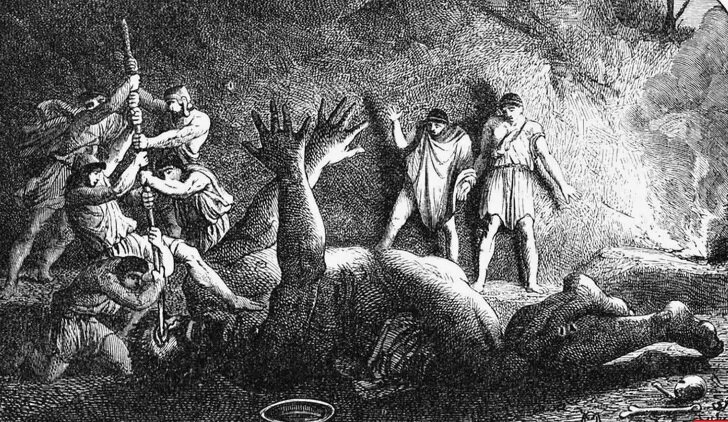The famous one-eyed giant of Greek mythology, Polyphemus first appeared in Homer’s Odyssey and became a recurring character in both classical literature and later European traditions.
Who Was Polyphemus?
According to Homer, the giant was the son of Poseidon, the sea god, and the nymph Thoosa. He inhabited the island which is now known as Sicily with other, unnamed giants with similar afflictions. While contemporary depictions of the Cyclops assume a humanoid with a single, huge eye, the classical and Renaissance portraits of Polyphemus show a giant with two empty eye sockets where human ocular organs would be, and a single eye centered above them.
Polyphemus in the Odyssey
Upon landing at Sicily, Odysseus and his men discovered a cave laden with provisions and set about feasting. It was, however, the pair of Polyphemus. When the giant returned from grazing his sheep, he imprisoned the sailors and began to systematically devour them. The Greeks understood this not only as a good story but as a horrible affront to the customs of hospitality.
Odysseus offered the giant a quantity of wine from his ship, which gets Polyphemus quite drunk. Before passing out, the giant asks Odysseus’ name; the wily adventurer tells him “Noman.” Once Polyphemus fell asleep, Odysseus blinded him with sharpened staff burning in the fire. Then he ordered his men to bind themselves to the undersides of Polyphemus’ flock. As the giant blindly felt for his sheep to ensure that the sailors didn’t escape, they passed unnoticed to freedom. Polyphemus, tricked and blinded, was left to scream of the injustice that “Noman” had done to him.
The injury to his son made Poseidon persecute Odysseus at sea, extending his perilous voyage home.
Other Classical Sources
The one-eyed giant became a favorite of classical poets and sculptors, inspiring a play by Euripides (“The Cyclops”) and appearing in the Aeneid of Virgil. Polyphemus became a character in the much-loved story of Acis and Galatea, where he pines for a sea-nymph and ultimately kills her suitor. The story was popularized by Ovid in his Metamorphoses.
An alternate ending to Ovid’s tale found Polyphemus and Galatea married, from their offspring were born a number of “savage” races, including the Celts, the Gauls, and the Illyrians.
In the Renaissance and Beyond
By way of Ovid, the story of Polyphemus — at least his role in the love affair between Acis and Galatea — inspired poetry, opera, statuary and paintings from all over Europe. In music, these include an opera by Haydn and a cantata by Handel. The giant was painted in a landscape by Poussin and a series of works by Gustave Moreau. In the 19th Century, Rodin produced a series of bronze sculptures based on Polyphemus. These artistic creations create a curious, fitting postscript to the career of Homer’s monster, whose name, after all, means “abounding in songs and legends.”










